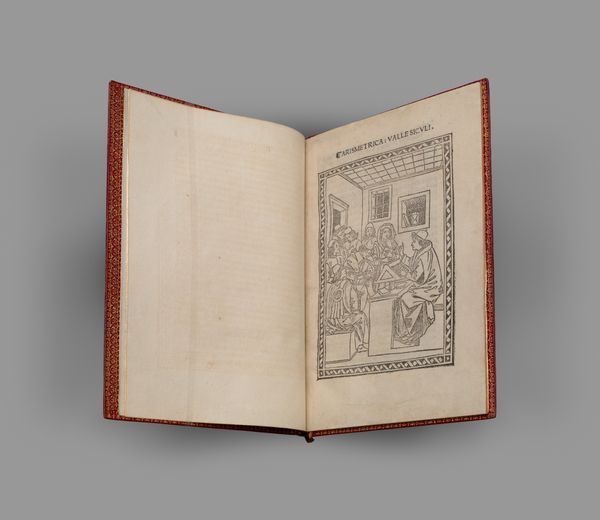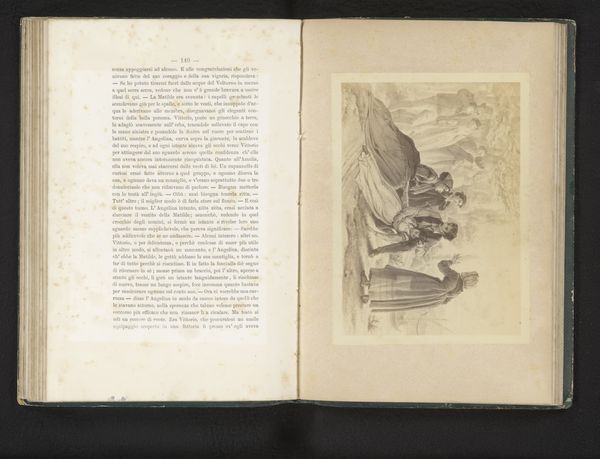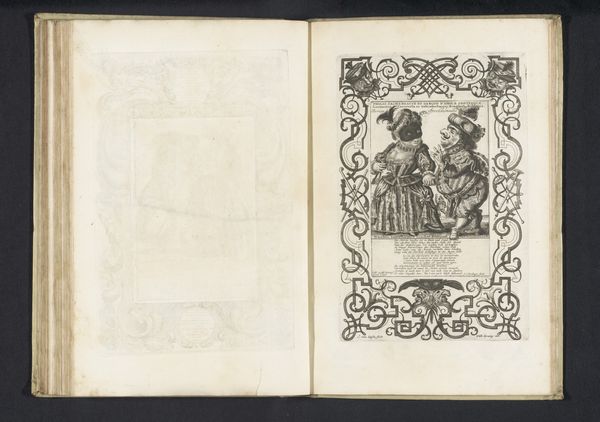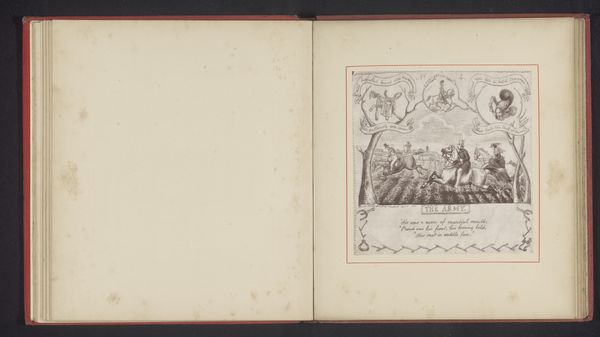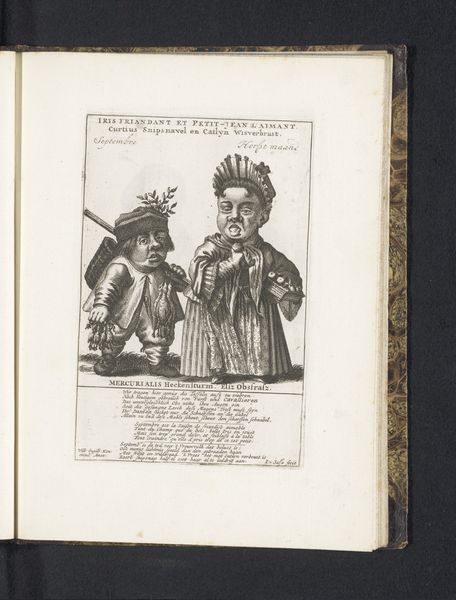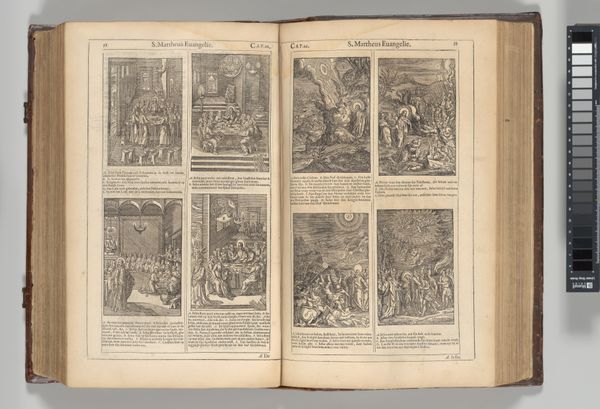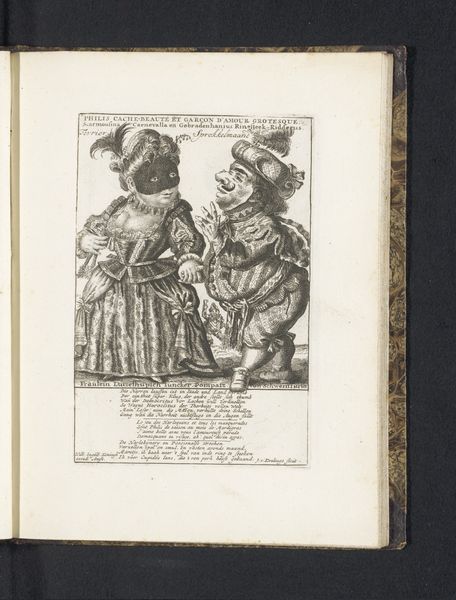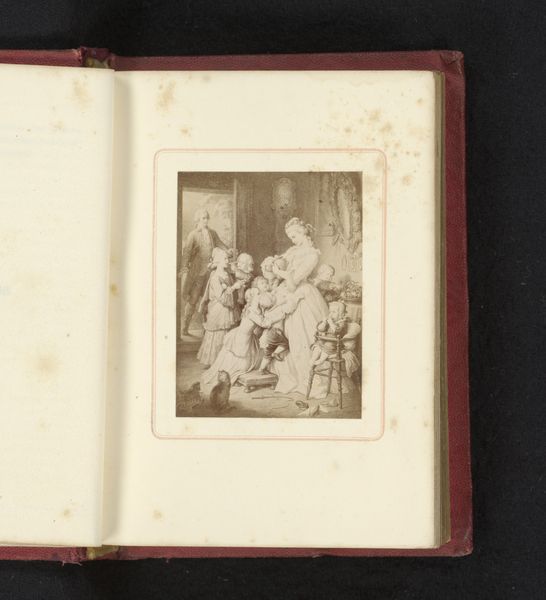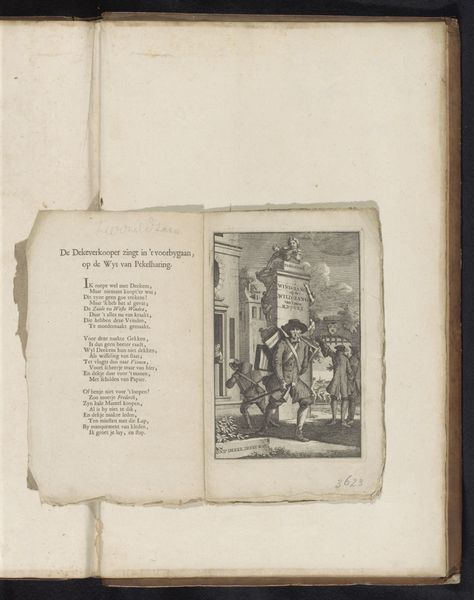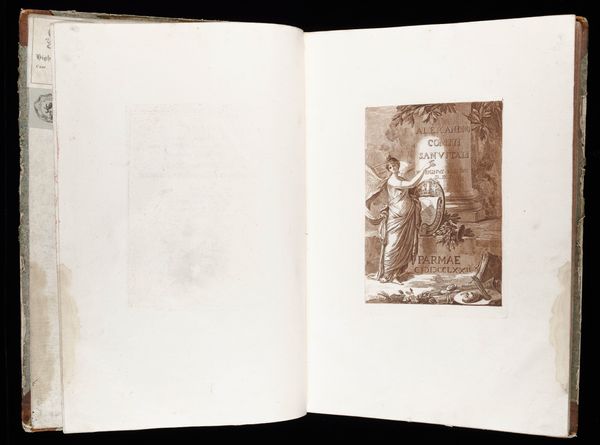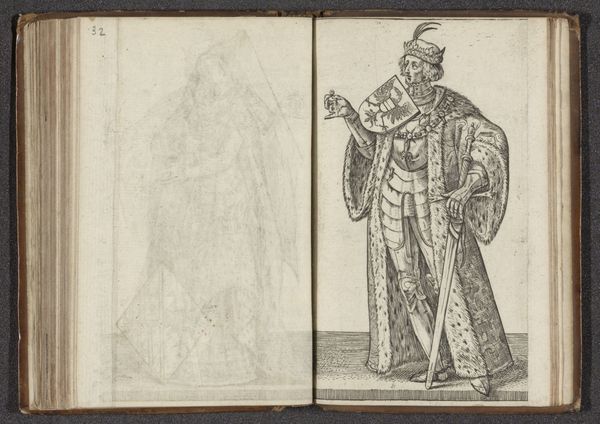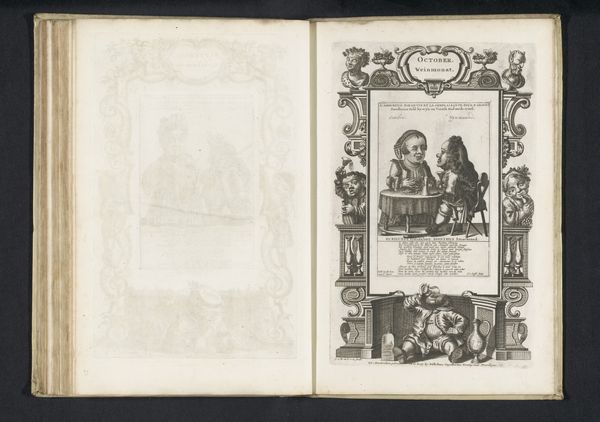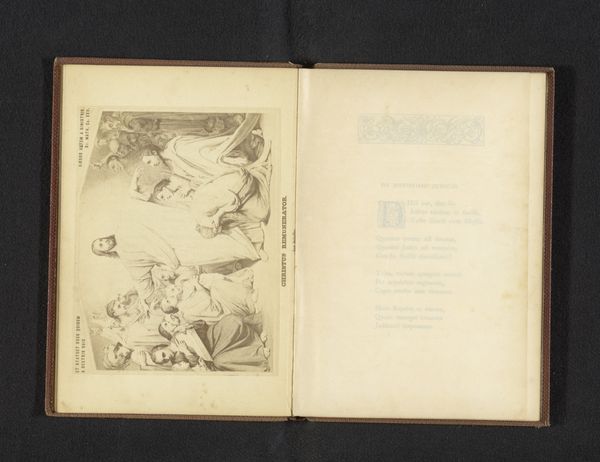
Collection of Humorous Leftovers (Kokkei zansai bukuro 滑稽残菜嚢) Possibly 1882
0:00
0:00
Dimensions: 7 3/16 × 4 13/16 × 3/8 in. (18.26 × 12.22 × 0.95 cm)
Copyright: Public Domain
Curator: Before us we have Kawanabe Kyōsai’s “Collection of Humorous Leftovers,” or, more literally, “Kokkei zansai bukuro,” created around 1882. It's an intriguing sketchbook piece using ink and color on paper. What's your immediate impression? Editor: Pure delight. A madcap flurry of lines, life exploding off the page. There’s something very honest, very alive, in its rough energy. Curator: Precisely. The composition utilizes a vibrant interplay between positive and negative space, a structural framework within which Kyōsai explores the visual language of humor. Notice how each page is essentially divided into narrative cells, framing disparate scenes and vignettes. Editor: Narrative cells—I like that. But to me, it feels like a single, teeming world seen in fractured glimpses. One moment we’re with the Westerner smoking, his tiny admirer... the next, smack in the middle of what looks like a rainstorm with lanterns bobbing precariously. The ink bleeds; life is messy, beautiful. Curator: The rapid brushstrokes contribute significantly to the overall dynamism. Note the minimal use of color; Kyōsai focuses primarily on line to define form and movement, adhering to certain principles characteristic of Ukiyo-e tradition. The tonal variations and the texture of the aged paper provide the piece with substantial visual interest. Editor: Tradition? Maybe. But it's got this utterly irreverent quality, a spark that feels very modern. Comic, satirical even. Like the leftovers themselves, Kyosai is grabbing fragments—bits of overheard conversation, a fleeting expression—and transforming them into something new. It speaks to a world in transition, a Japan opening itself. Curator: Your point is well-taken; there is a degree of social commentary embedded here, particularly when considered against the backdrop of Meiji-era Japan. However, let’s not overlook the intrinsic aesthetic value... Editor: Agreed. But isn’t art about more than aesthetics? What stays with me is the raw human element—the artist’s hand, the laughter, the world caught in mid-motion. It's joyous, a celebration of imperfection. Curator: A fitting sentiment. I leave with a greater appreciation for the interplay between technique and expression present within the work. Editor: Me too! Makes me want to pull out my own sketchbook and just...create. Thanks for the deep dive.
Comments
No comments
Be the first to comment and join the conversation on the ultimate creative platform.
